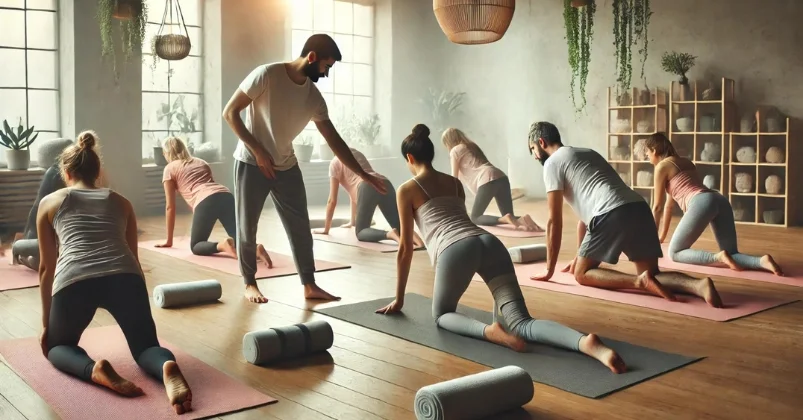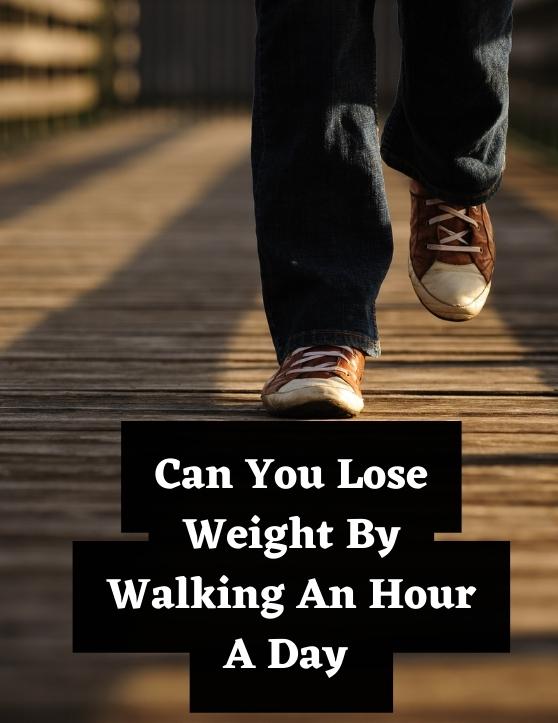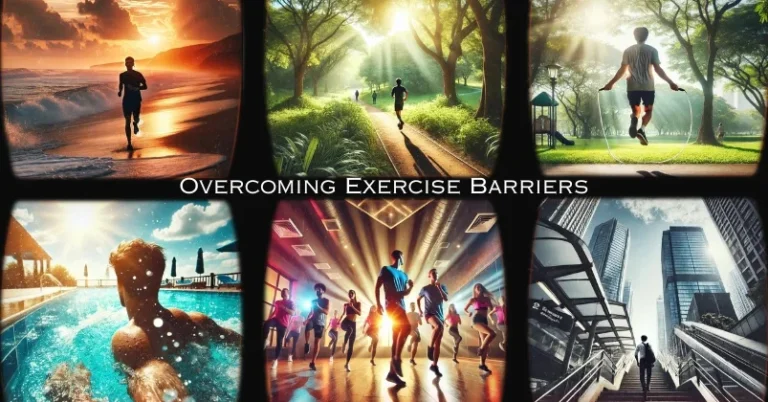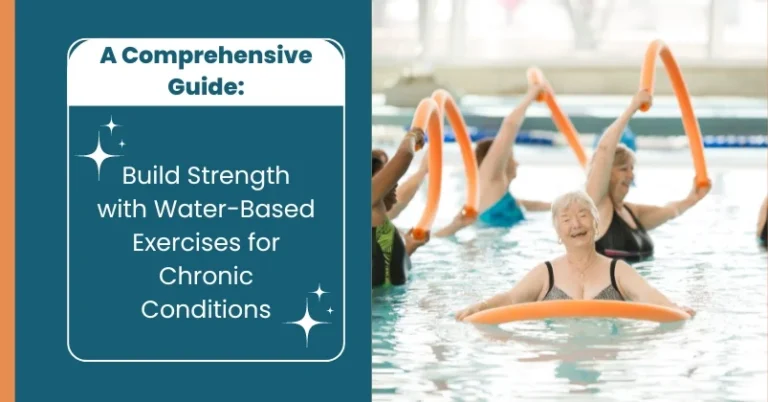Adaptive Yoga for Back Pain: Techniques and Benefits
Adaptive yoga is a form of yoga that is accessible to everyone, regardless of their age, body type, or physical abilities. It is a practice tailored to individual needs and abilities, making it an ideal choice for those suffering from back pain. Adaptive yoga can help alleviate pain and improve mobility, flexibility, and overall well-being.
Understanding adaptive yoga is essential for anyone seeking to relieve back pain. This practice involves modifications to traditional yoga poses to make them more accessible to individuals with physical limitations. Adaptive yoga classes are generally small, with a focus on individualized attention and instruction. The use of props and equipment, such as blocks, straps, and bolsters, can also help individuals achieve the correct posture and alignment, making it easier to perform the poses correctly.
The benefits of adaptive yoga for back pain are numerous. This practice can help relieve tension, improve flexibility, and strengthen core muscles. Additionally, adaptive yoga can help reduce stress and anxiety, which can contribute to back pain. By incorporating breathing techniques and stress relief into the practice, individuals can experience a greater sense of relaxation and overall well-being.
Key Takeaways
- Adaptive yoga is a form of yoga that is tailored to individual needs and abilities, making it an ideal choice for those who suffer from back pain.
- Modifications to traditional yoga poses, the use of props and equipment, and individualized attention and instruction are all hallmarks of adaptive yoga.
- Adaptive yoga can help alleviate pain, improve flexibility, strengthen core muscles, and reduce stress and anxiety.
Understanding adaptive yoga
Adaptive yoga is a style of yoga that is accessible to everybody, including those with back pain. It involves multiple variations of poses, allowing them to be adapted to people's unique needs. This style of yoga is highly personalized and can be modified to suit the individual's physical abilities, limitations, and injuries.
The practice of adaptive yoga is grounded in the principle of awareness. It emphasizes being mindful of the body and its sensations, movements, and breath. By cultivating this awareness, practitioners can better understand their bodies and make modifications as needed. This approach helps to prevent injury and allows individuals to work at their own pace.
One of the main benefits of adaptive yoga is that it can help alleviate back pain. Many of the poses used in this style of yoga focus on strengthening the back muscles, improving flexibility, and correcting posture. Additionally, the practice of adaptive yoga can help reduce stress and tension, which can contribute to back pain.
It's important to note that adaptive yoga is not a one-size-fits-all approach. Modifications are made based on the individual's needs, and the practice is tailored to their physical abilities. This personalized approach helps to ensure that the practice is safe and effective for each individual.
In summary, adaptive yoga is a highly accessible and personalized style of yoga that can be modified to suit the needs of individuals with back pain. By emphasizing awareness and making modifications as needed, practitioners can safely and effectively improve their physical health and well-being.
Benefits of adaptive yoga for back pain
Adaptive yoga is a type of yoga that is tailored to the individual needs of the practitioner. It is an effective way to manage back pain and improve overall well-being. Here are some of the benefits of adaptive yoga for back pain:
Pain relief
Adaptive yoga is effective in reducing back pain. A 2020 review of 25 randomized controlled trials found that yoga can help alleviate pain and improve function in people with back pain. The study found that 20 of the studies reported positive outcomes in variables such as pain or psychological distress (e.g., depression and anxiety), or energy.
Stress and anxiety reduction
Adaptive yoga can help reduce stress and anxiety, which are common contributors to back pain. The practice of yoga involves deep breathing, which can help calm the mind and reduce stress levels. Additionally, the physical movements of yoga can help release tension and promote relaxation.
Improved quality of life
Adaptive yoga can improve the overall quality of life for people with back pain. It can help increase flexibility, strength, and balance, which can reduce the risk of further injury. Additionally, the practice of yoga can help improve sleep, digestion, and mood, which can all contribute to a better quality of life.
Tailored to your needs
Adaptive yoga is tailored to the individual needs of the practitioner. This means that poses and movements are modified to accommodate any physical limitations or injuries. This makes it a safe and effective way to manage back pain, even for those with chronic conditions.
Overall, adaptive yoga is a safe and effective way to manage back pain and improve overall well-being. It can help reduce pain, stress, and anxiety, and improve quality of life. With its tailored approach, it is a great option for people with back pain, regardless of their physical limitations or injuries.
Importance of mobility and flexibility
Mobility and flexibility are essential for maintaining a healthy body, especially for those who suffer from back pain. Adaptive yoga is a great way to improve your mobility and flexibility, which can help reduce pain and improve overall quality of life.
Mobility refers to the ability to move your joints freely and easily. It is crucial for maintaining a healthy body and preventing injuries. Flexibility, on the other hand, refers to the ability of your muscles to stretch and move without causing pain or discomfort.
By practicing adaptive yoga, you can increase your range of motion, which makes it easier to move your joints in a normal direction with less effort. This, in turn, can help to reduce muscle tension and improve overall flexibility.
Yoga poses that focus on mobility and flexibility can help to improve joint health and reduce the risk of injury. For example, the Tree Pose is an excellent pose for improving balance and flexibility. It involves standing on one foot while holding the other foot to your calf or above the knee at a right angle. This pose can help to improve balance, strengthen your core, and increase flexibility in your hips and legs.
In addition to reducing pain and improving overall quality of life, mobility and flexibility can also help to prevent future injuries. By maintaining good joint health and flexibility, you can reduce your risk of developing conditions like arthritis or other chronic pain conditions.
Overall, practicing adaptive yoga can be an excellent way to improve your mobility and flexibility, which can help reduce pain, prevent injuries, and improve overall quality of life.
Key yoga poses for back pain
If you're dealing with back pain, practicing yoga can be a great way to alleviate discomfort and improve flexibility. Here are some key yoga poses for back pain:
Cat-cow pose
Cat-Cow is a great way to stretch your hips, chest, and back during your warm-up. Start on your hands and knees in the Tabletop position. Make sure your knees are set directly below your hips and your wrists, elbows, and shoulders are in line and perpendicular to the floor. Inhale and arch your back, lifting your tailbone and head towards the ceiling. This is the Cow pose. Exhale and round your spine, tucking your chin to your chest and bringing your tailbone towards your knees. This is the Cat pose. Repeat this sequence for several breaths, moving smoothly between the two poses.
Seated spinal twist
The Seated Spinal Twist is a great pose to release tension in your lower back. Sit on the floor with your legs extended in front of you. Bend your right knee and place your right foot on the floor outside your left thigh. Inhale and lengthen your spine. Exhale and twist to the right, placing your left elbow on the outside of your right knee. Use your elbow to deepen the twist, and gaze over your right shoulder. Hold for several breaths, then repeat on the other side.
Forward bend
The Forward Bend is a gentle pose that can help stretch your hamstrings, lower back, and hips. Sit on the floor with your legs extended in front of you. Inhale and lengthen your spine. Exhale and fold forward, reaching your hands towards your feet. If you can't reach your feet, you can place your hands on your shins or use a strap. Keep your knees slightly bent to protect your lower back. Hold for several breaths.
Cobra
The Cobra pose is a great way to strengthen your back muscles and improve posture. Lie on your stomach with your hands under your shoulders. Inhale and press your hands into the floor, lifting your chest and head. Keep your shoulders relaxed and your elbows close to your sides. Exhale and lower back down to the floor. Repeat for several breaths.
Remember to listen to your body and only do what feels comfortable. If you have any concerns about practicing yoga with back pain, talk to your doctor or a qualified yoga instructor.
Understanding body alignment and posture
Proper body alignment and posture are critical for maintaining a healthy spine and reducing back pain. In adaptive yoga, we focus on improving body alignment and posture to prevent and alleviate back pain.
Posture
Posture refers to the way we hold our body while standing, sitting, or lying down. Good posture involves the proper alignment of the spine, neck, chest, hips, and torso. When we maintain good posture, we reduce the stress and strain on our spine and muscles, which can lead to back pain.
Alignment
Alignment refers to the position of our joints and bones relative to each other. Proper alignment helps distribute the weight of our body evenly, reducing the risk of injury and strain. In adaptive yoga, we focus on improving alignment to reduce back pain and increase mobility.
Body
The body is a complex system of bones, muscles, and joints that work together to support movement and posture. In adaptive yoga, we focus on developing body awareness and improving flexibility and strength to support proper alignment and posture.
Back and spine
The back and spine are critical components of the body, providing support and protection for the spinal cord and nerves. In adaptive yoga, we focus on improving the health of the spine and reducing back pain through gentle stretches and strengthening exercises.
Neck and chest
The neck and chest are also important areas to focus on for proper alignment and posture. In adaptive yoga, we work on opening up the chest and lengthening the neck to reduce tension and strain in these areas.
Hips and torso
The hips and torso are essential for maintaining balance and stability in the body. In adaptive yoga, we work on strengthening the core and improving hip mobility to support proper alignment and posture.
By understanding the importance of body alignment and posture, we can reduce the risk of back pain and improve overall health and well-being. Adaptive yoga provides a safe and effective way to improve body awareness, flexibility, and strength, promoting proper alignment and posture for a healthier, happier you.
Strengthening core muscles
Adaptive yoga can help strengthen core muscles, which can play a significant role in relieving back pain. The core muscles include the transverse abdominis, erector spinae, and other muscles that support the spine and torso.
Strengthening the core muscles can help improve posture, balance, and stability, which can reduce the risk of back injuries and pain. Adaptive yoga poses that target the core muscles can also help improve flexibility, range of motion, and overall physical fitness.
One of the most effective ways to strengthen the core muscles is to practice yoga poses that engage the muscles in the abdominal region. These poses can help activate the transverse abdominis, which is a deep muscle that helps stabilize the spine.
Some of the yoga poses that can help strengthen the core muscles include:
- Plank Pose: This pose engages the entire core, including the transverse abdominis, erector spinae, and other muscles in the back and abdomen.
- Boat Pose: This pose targets the abdominal muscles and can help improve core strength and stability.
- Side Plank: This pose targets the oblique muscles and can help improve balance and stability.
Incorporating these poses into your adaptive yoga practice can help strengthen the core muscles and reduce the risk of back pain and injuries. However, it is essential to practice these poses with proper form and alignment to avoid straining the back muscles.
In conclusion, strengthening the core muscles is an essential aspect of adaptive yoga for back pain. By engaging the transverse abdominis, erector spinae, and other muscles that support the spine and torso, you can improve your posture, balance, and stability, which can reduce the risk of back injuries and pain.
Adaptive yoga for specific conditions
Adaptive yoga is a form of yoga that modifies traditional yoga poses to make them more accessible for people with specific conditions. Adaptive yoga can be a great way to improve flexibility, strength, and balance while reducing pain and stress. Here are some examples of how adaptive yoga can be used to help people with specific conditions:
Yoga for sciatica
Sciatica is a condition that causes pain and discomfort in the lower back and legs. Yoga can be an effective way to manage sciatica symptoms by improving flexibility and reducing tension in the muscles that surround the sciatic nerve. Some yoga poses that may be helpful for people with sciatica include:
- Child's pose: This pose can help stretch the lower back and hips, which can relieve tension on the sciatic nerve.
- Pigeon pose: This pose can help stretch the glutes and hips, which can also relieve tension on the sciatic nerve.
- Downward-facing dog: This pose can help lengthen the spine and stretch the hamstrings, which can relieve tension in the lower back.
Yoga for scoliosis
Scoliosis is a condition that causes the spine to curve to one side. Yoga can be a helpful way to manage scoliosis symptoms by improving posture, flexibility, and strength. Some yoga poses that may be helpful for people with scoliosis include:
- Mountain pose: This pose can help improve posture and alignment.
- Triangle pose: This pose can help stretch the spine and improve flexibility in the hips and hamstrings.
- Cobra pose: This pose can help strengthen the muscles in the back and improve posture.
Yoga for spinal cord injuries
Spinal cord injuries can cause a range of symptoms, including pain, weakness, and loss of sensation. Yoga can be a helpful way to manage these symptoms by improving flexibility, strength, and balance. Some yoga poses that may be helpful for people with spinal cord injuries include:
- Cat-cow pose: This pose can help improve flexibility in the spine and reduce tension in the back muscles.
- Warrior pose: This pose can help improve strength and balance in the legs and core.
- Tree pose: This pose can help improve balance and stability in the legs and core.
Yoga for multiple sclerosis
Multiple sclerosis is a chronic condition that affects the central nervous system. Yoga can be a helpful way to manage multiple sclerosis symptoms by improving flexibility, strength, and balance while reducing stress and anxiety. Some yoga poses that may be helpful for people with multiple sclerosis include:
- Corpse pose: This pose can help reduce stress and promote relaxation.
- Bridge pose: This pose can help strengthen the muscles in the back and improve flexibility in the hips.
- Tree pose: This pose can help improve balance and stability in the legs and core.
Yoga for cerebral palsy
Cerebral palsy is a condition that affects movement and coordination. Yoga can be a helpful way to manage cerebral palsy symptoms by improving flexibility, strength, and balance. Some yoga poses that may be helpful for people with cerebral palsy include:
- Child's pose: This pose can help stretch the lower back and hips.
- Warrior pose: This pose can help improve strength and balance in the legs and core.
- Tree pose: This pose can help improve balance and stability in the legs and core.
Adaptive yoga can be a safe and effective way to manage chronic conditions like sciatica, scoliosis, spinal cord injuries, multiple sclerosis, and cerebral palsy. If you have a specific condition, it's important to talk to your healthcare provider before starting any new exercise program, including adaptive yoga.
Incorporating props and equipment
Adaptive yoga incorporates the use of props and equipment to help individuals with back pain achieve the poses comfortably. Props and equipment can be used to provide support, stability, and comfort during yoga practice.
Props
Props such as blocks, straps, and blankets can be used to modify poses and make them more accessible. Blocks can be used to bring the floor closer to the body, providing support and stability during standing poses. Straps can be used to extend the reach of the arms, making it easier to hold poses such as seated forward folds. Blankets can be used to provide cushioning and support during poses such as shoulder stands.
Equipment
Equipment such as chairs and bolsters can also be used in adaptive yoga to provide additional support and stability. Chairs can be used to modify standing poses, allowing individuals with back pain to practice yoga without putting undue stress on their backs. Bolsters can be used to support the body during restorative poses, providing a comfortable and relaxing experience.
Wheelchair yoga
For individuals who use a wheelchair, adaptive yoga can be modified to be practiced in a seated position. Props such as blocks and straps can be used to modify poses, and the wheelchair itself can be used as a prop to provide additional support and stability.
Incorporating props and equipment into adaptive yoga can help individuals with back pain achieve the benefits of yoga without causing further strain or discomfort. By modifying poses and using props and equipment, individuals can practice yoga safely and comfortably, improving their overall health and well-being.
Breathing techniques and stress relief
Adaptive yoga for back pain emphasizes the importance of breathing techniques and stress relief. Breathing is a fundamental aspect of yoga, and it can help individuals manage stress and anxiety. By learning to breathe deeply, individuals can calm their minds and reduce tension in their bodies.
One of the most effective breathing techniques for stress relief is deep breathing. This technique involves taking slow, deep breaths, and exhaling slowly. It can be done anywhere, at any time, and it only takes a few minutes to feel the benefits. Deep breathing can help lower blood pressure, reduce anxiety, and promote relaxation.
Another breathing technique that can help with stress relief is alternate nostril breathing. This technique involves breathing in through one nostril and out through the other. It can help balance the nervous system and promote relaxation.
In addition to breathing techniques, adaptive yoga for back pain also includes stress-relieving poses. These poses can help release tension in the body and calm the mind. Some stress-relieving poses include:
- Child's pose
- Legs up the wall
- Corpse pose
By incorporating breathing techniques and stress-relieving poses into their yoga practice, individuals can manage their stress and reduce tension in their bodies. Adaptive yoga for back pain provides a safe and effective way to manage stress and anxiety, while also improving overall physical health.
Finding the right yoga teacher or studio
When looking for a yoga teacher or studio that offers adaptive yoga for back pain, it is important to keep a few things in mind. First and foremost, make sure to find a teacher who is knowledgeable and experienced in working with individuals who have back pain. Look for someone who has completed additional training in therapeutic or adaptive yoga.
Yoga studios that offer adaptive yoga classes may also be a good option. These studios often have a variety of classes available, including those specifically designed for individuals with back pain. When researching studios, look for ones that prioritize individualized attention and offer modifications for poses as needed.
It is also important to find a teacher or studio that aligns with your personal preferences and needs. Consider factors such as location, class schedule, and cost when making your decision. Some studios may offer free or discounted classes for first-time students, so take advantage of these offers to try out different teachers and styles of yoga.
If you live in the Bay Area, there are several yoga studios and teachers who specialize in adaptive yoga for back pain. Some popular options include:
- Yoga Tree: With multiple locations throughout the Bay Area, Yoga Tree offers a variety of classes, including adaptive yoga for back pain. Their classes are designed to be accessible for all levels and abilities.
- The Mindful Body: This San Francisco-based studio offers a range of yoga classes, including therapeutic yoga for back pain. Their teachers have extensive training in anatomy and physiology, allowing them to offer personalized modifications and adjustments.
- YogaWorks: With locations in San Francisco and Walnut Creek, YogaWorks offers a variety of yoga classes, including therapeutic yoga for back pain. Their teachers are trained in a variety of styles, allowing you to find a class that works best for you.
Remember, finding the right yoga teacher or studio is a personal decision. Take the time to research your options and try out different classes to find the one that works best for you and your needs.
FAQs
Adaptive yoga poses are designed to be accessible to everyone, regardless of their physical abilities. Some adaptive yoga poses that can help alleviate back pain include:
1. Child's Pose
2. Cat-Cow Stretch
3. Downward-Facing Dog
4. Sphinx Pose
5. Seated Forward Fold
For beginners with back pain, it's important to start with gentle poses that focus on stretching and strengthening the back muscles. Some beginner-friendly yoga poses for those with back pain include:
1. Cobra Pose
2. Bridge Pose
3. Triangle Pose
4. Mountain Pose
5. Standing Forward Bend
Chair yoga is a modified form of yoga that is practiced while sitting on a chair or using a chair for support. It can be beneficial for individuals with back pain because it reduces the pressure on the spine and makes yoga more accessible for those with limited mobility. Some chair yoga poses that can help alleviate back pain include:
1. Seated Twist
2. Seated Forward Fold
3. Seated Cat-Cow Stretch
4. Seated Spinal Twist
5. Seated Pigeon Pose
Certain yoga poses can exacerbate lower back pain and should be avoided. These include:
1. Full Forward Bend
2. Plow Pose
3. Camel Pose
4. Wheel Pose
5. Upward-Facing Dog
Research has shown that yoga can be an effective treatment for back pain. Some research-backed benefits of yoga for back pain include:
1. Reduced pain and discomfort
2. Improved flexibility and range of motion
3. Increased strength and endurance
4. Reduced stress and anxiety
Yes, yoga can be safely practiced with lower back pain. However, it's important to consult with a healthcare professional before starting any new exercise program, especially if you have a pre-existing condition like lower back pain. It's also important to listen to your body and modify or avoid poses that cause pain or discomfort.








